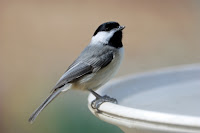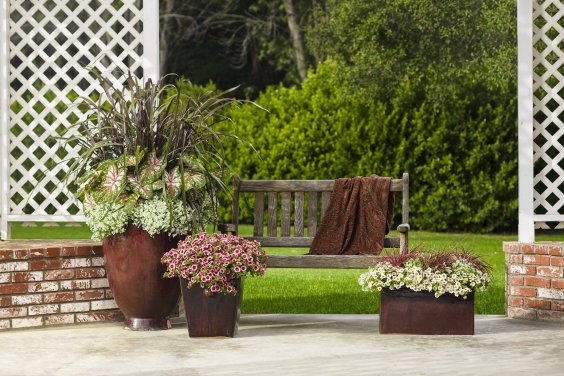It is hard to say
who benefits more from backyard bird feeders - the birds or the people who feed
them. Some of life’s more enjoyable moments include the songs and antics of the
birds outside our windows. Watching them is so captivating that it can alter an
entire day’s plans, turning a twenty-minute breakfast into a three-hour brunch.
Activity at your feeders probably can hold your attention all day with its
ever-changing pattern of form and color, from fluffed-up chickadees to sleek
cardinals. But yet I hear, where have all
the birds gone? I don’t have as many as
I used to.
Until
recent years the brightest spot on the winter landscape, with the most
activity, is the bird feeder in the backyard. No matter what size yard or
garden you have, you can create your own bird haven. All you need are food,
water, and shelter. Shrubs and evergreens are good, not only to offer cover
during harsh northern winters, but also to protect birds from their natural
enemies. I encourage you to look at your landscape and see what you can do to encourage
wild bird habitat.
Several
years ago, there was a national call to ‘save the bees!’. The last two years it
has remained bees, and the Monarch butterfly was added to the list. This year
you will be reading quite a lot from the National Audubon society as well as
other environmental groups that we should now be worried about the huge decline
in our native bird numbers. Birds are very important to our ecological and
environmental health. They too, are great pollinators, and help keep insects at
bay.
So,
I ask you, to look around your neighborhoods and parks. Close your eyes and
listen. Maybe not as melodious as it used to be? The ultimate bird songs so
familiar as we were growing up, not as prevalent. Now is the time to act and
plan to enhance your gardens and landscapes with beneficial plants such as
native species that will feed our feathered friends. Let’s continue to increase
the pollination process we need for good environmental health.
Start
this winter by offering food, water and shelter to our feathered friends. It is
so easy to do, and we can help. Next spring add natives to the landscapes or containers,
and we will be well on our way of enhancing our little piece of heaven here on
earth.
Happy
New Year dear friends…
See you in the garden…
Sandi Hillermann McDonald
















 Tip for the month of July—Sit Back and Relax!! For many of us, the 4
Tip for the month of July—Sit Back and Relax!! For many of us, the 4















